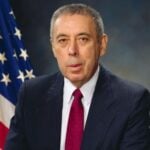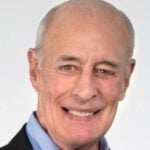Space Foundation News
Remembering Hill Award Recipient CAPT John Young
Written by: Space Foundation Editorial Team
Former Gemini, Apollo, and Space Shuttle astronaut CAPT John Young, USN (Ret.), died on Jan. 6, at the age of 87.
Young, who walked on the Moon during the Apollo 16 mission in 1972, and piloted the first Space Shuttle in 1981, is the only astronaut to have piloted four different classes of spacecraft: Gemini, Apollo Command/Service Module, Apollo Lunar Module, and Space Shuttle. During his 42 years with NASA, Young flew six missions including two to the Moon, set a lunar rover speed record on the Moon’s surface and was the first person to orbit the Moon alone during the Apollo 10 mission.
He was also the 2010 recipient of the Space Foundation’s highest honor — the General James E. Hill Lifetime Space Achievement Award, presented to him in person during the 26th National Space Symposium.
About Young
Born in San Francisco and raised in Orlando, Fla., Young earned a bachelor of science degree in aeronautical engineering with highest honors from the Georgia Institute of Technology in 1952, after which he entered the United States Navy. He served as Fire Control Officer on the destroyer USS Laws until June 1953 and completed a tour in the Korean Seas. He then became a fighter pilot, and in 1959, a test pilot.
Young joined NASA in 1962 and flew, with Virgil “Gus” Grissom, the first manned Gemini flight. He was commander of the Gemini 10 mission, which performed the first dual rendezvous with two separate Agena target vehicles.
On the Apollo 10 mission – the second manned flight to the Moon – Young flew the command module solo while crewmates Thomas Stafford and Eugene Cernan orbited the Moon in the lunar module. As commander of Apollo 16, Young walked on the Moon and set a speed record with the lunar rover.
In 1973, Young became chief of the Space Shuttle branch of the Astronaut Office and, from 1974 -1987, he was chief of the Astronaut Office. He flew two Space Shuttle missions: STS-1, the Shuttle’s first flight, and STS-9, which used Spacelab for the first time.
Young also served on five backup space flight crews: backup pilot in Gemini 6, backup command module pilot for the second Apollo mission and for Apollo 7, and backup spacecraft commander for Apollo 13 and Apollo 17. Young had a major role in rescuing the Apollo 13 crew as a member of the team that developed procedures to stretch consumables and reactivate the command module systems for re-entry.
In 1987, Young was named special assistant to the director of the Johnson Space Center for engineering, operations and safety. In 1996, he was named associate director (technical), responsible for technical, operational and safety oversight of all NASA programs and activities assigned to the Johnson Space Center.
Young retired from the Navy in September 1976, after completing 25 years of active military service; he retired from NASA in December 2004, at the age of 74, with 42 years of service.
Young put more than 15,000 hours into training and logged more than 15,275 hours in props, jets, helicopters, and rocket jets, more than 9,200 hours in T-38s, and 835 hours in his six space flights.
He held six honorary degrees and has a highway in central Florida named for him.


